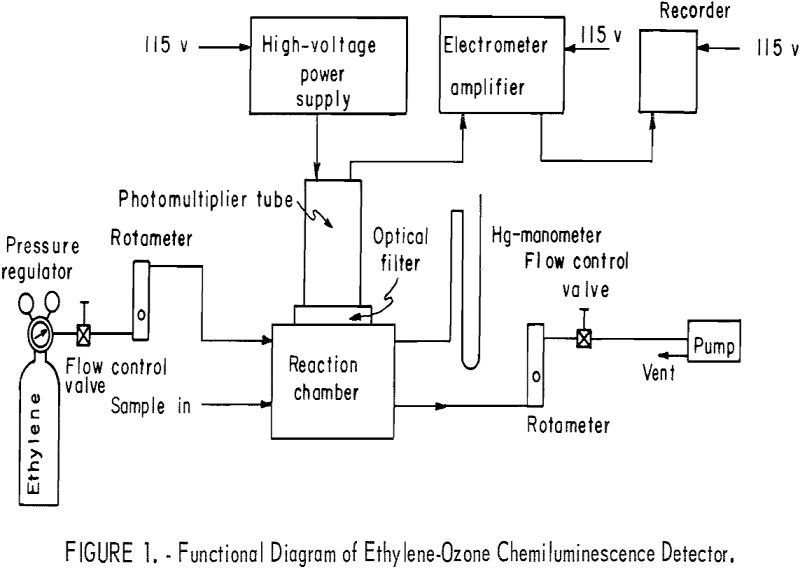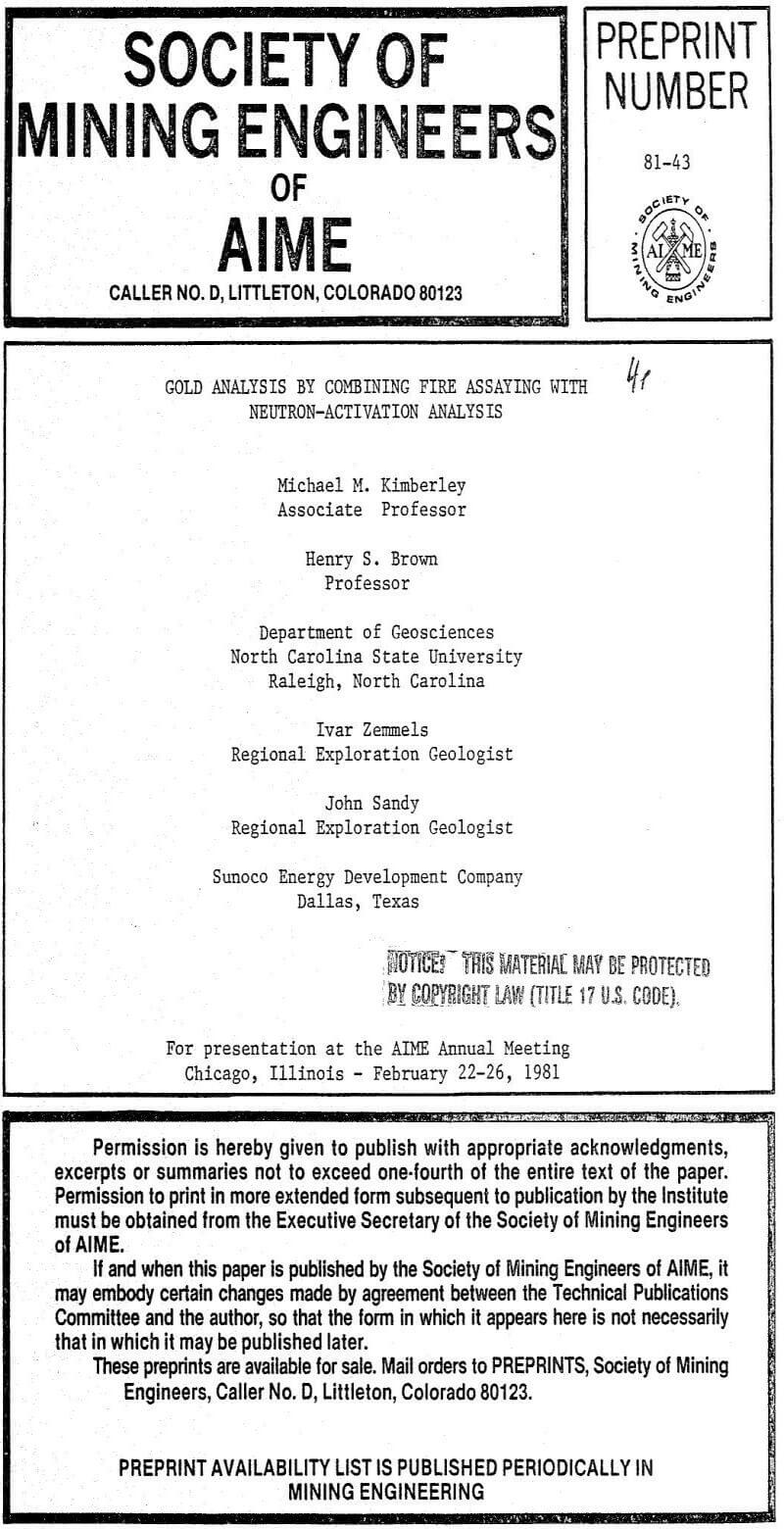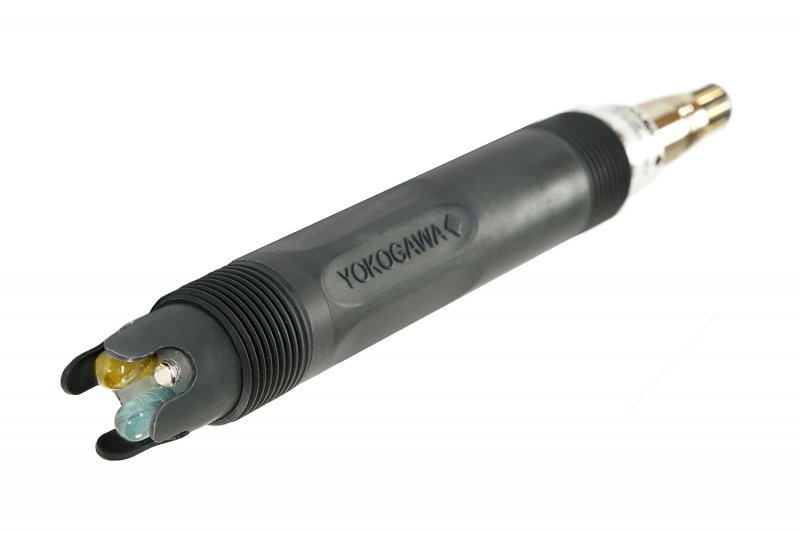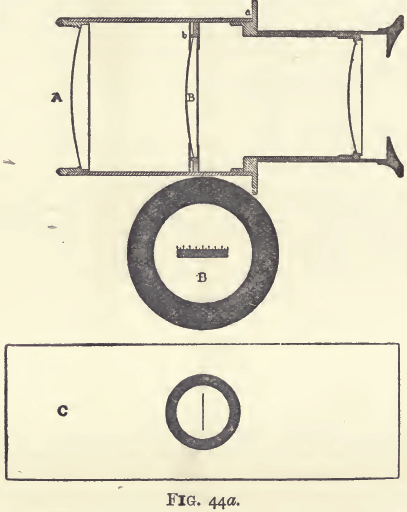Chemiluminescence Detector

Instruments currently in use for routine measurement of ozone in the atmosphere are based on ultraviolet spectrometry, coulometry, or colorimetry. Studies have shown that none of these techniques is completely satisfactory for routine ozone measurement, either because the instruments require an inordinate amount of attention or because they lack the requisite specificity to ozone or […]
Sample Preparation Method for Cyanide Shake Assay of Gold
A series of tests were undertaken for the Aurora Partnership-Aurora Project to solve inter-laboratory variations in the analyses of blast hole cuttings. Initial concern was centered on the probability that free gold occurrence was resulting in erratic results for the mine’s cyanide shake assays and outside laboratory fire assays. Test Procedure A 50 kilogram bulk […]
Laboratory Balling & Pelletizing Method
Early laboratory balling and pelletizing tests resulted in balls or pellets superior in quality as compared to production pellets, no matter what the variable being tested. In order to indicate more closely what a material would do for balling and pelletizing in a plant we felt it was necessary to approach the plant conditions. When […]
Neutron Activation Analysis for Silver

Gold values in the surveyed sulfide-poor rock units proved to be generally even lower than those in sulfidic sandstone. As a further check on this survey of mineralization, silver values began to be measured by NAA on the silver-gold beads. Radioactivity induced in silver by neutron bombardment is long-lived. The half-life of 110mAg is 253 […]
Mineral Liberation Analysis
Liberation data were obtained from polished mounts made from the various size fractions produced during the batch grinding experiments. Representative portions of each size fraction were first treated with ethanol and then mounted in a cold setting resin (EPOFIX Epoxy). To minimize segregation of particles on the basis of mass or density, the particles were […]
Gold Redox ORP Probes used in Flotation Circuit

Three gold sensing electrodes were made from 3 mm gold rod. The rod was cut with a diamond wafering saw into 3 mm lengths, soldered to insulated copper wire, placed inside 9 cm lengths of 1 cm (outside diameter) Plexiglas tubing, and cast inside the tubing with epoxy. After the epoxy was set, the gold […]
Froth Flotation 101 in Video

Discussion flotation and mineral processing with industry metallurgist from around the world. Wetting and not wetting or water-absorbing is the principle of flotation. Some minerals are wetted, whereas others are not wetted. Wetting is a variable property of minerals and depends upon the surface properties of the solid, liquid, and gaseous conditions. Minerals that are […]
Sizing and Metallurgical Testing
Size is crucial to virtually all mineral processing A size range in a standard series is generally identified by the bottom size in the range A single size parameter is not enough to define a size distribution Narrow size ranges are generally best for following separation processes Sizes are usually arranged in a ratio series […]
Gold Parting Process

The thin sheet of metal is dropped into hot dilute nitric acid and boiled for five or six minutes after the brisk action of the acid on the metal has ceased. At this stage nearly all the silver has gone into solution as nitrate of silver and the acid is charged with this salt. This […]
Determine Gold Content By the Microscope

The use of the microscope also is a real advantage in estimating the weights of minute buttons of gold where there is no undue risk in sampling, and where an error of say 1 in 20 on the quantity of gold is tolerable. For ores with copper, lead, zinc, &c., as well as for tailings […]
